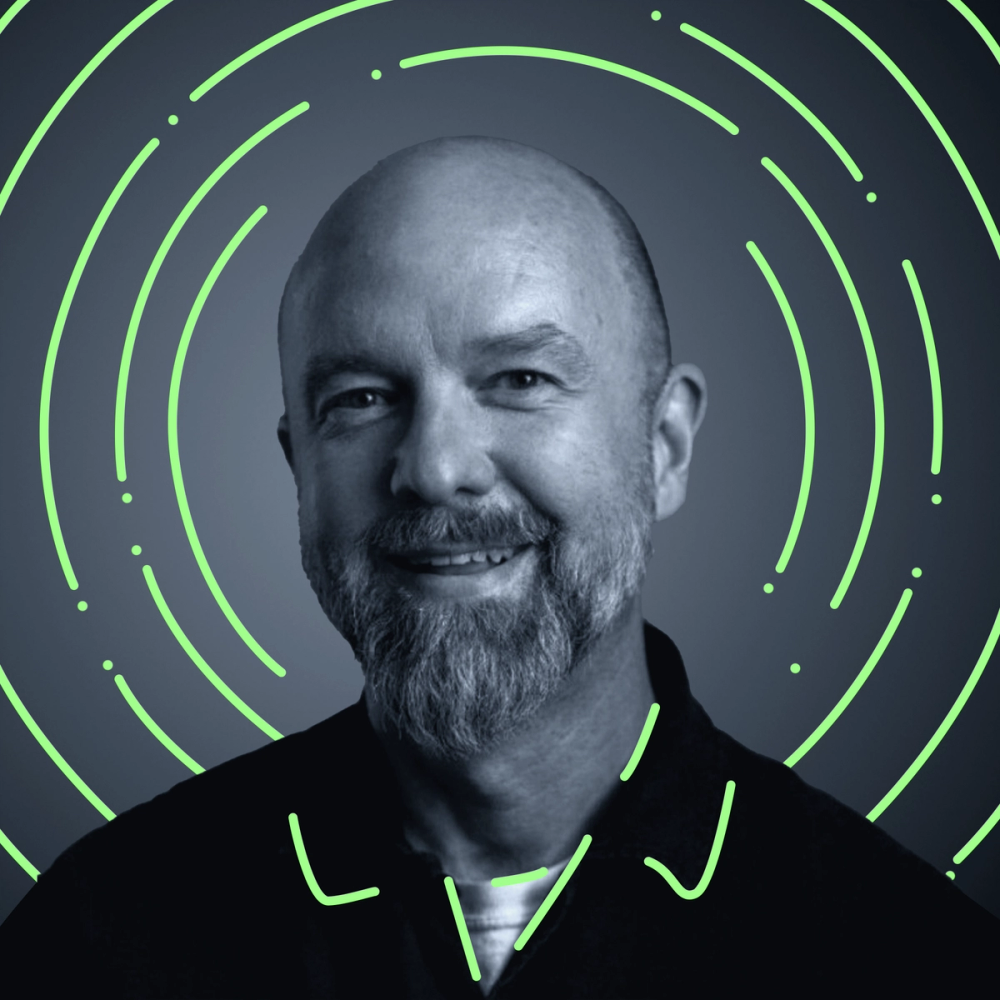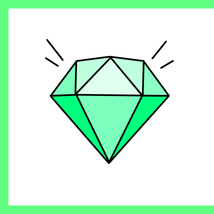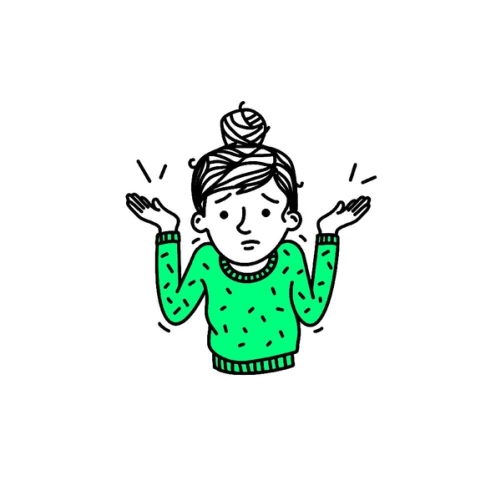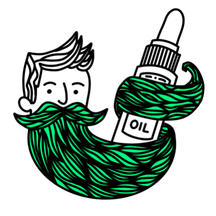Jenna Bilotta: The Biggest Design Problem to Solve is Diversity

Superside is an always-on design company that delivers top-quality creative at scale to enterprise teams. This interview is part of our recurring series “Creative Thinkers,” where we talk to amazing people about career challenges, the transformative role design has played in their lives and what it means to be creative.
Introduction
Jenna Bilotta, the VP of design, Premium, at Spotify, knows what it’s like to feel alone at work. In one of the first meetings she had as a young designer working for Google, she was the only woman in a room of 18. That sense of isolation followed her from Google to YouTube to Dropbox, but it never diminished her passion for effecting change along the way and, now, at the leadership level. After all, she says, diverse perspectives drive the best design and that’s what we all want, isn’t it?
"All my life, I’ve basically been creating things."
When I was little, I made my own paper dolls with full wardrobes. I was always drawing and creating little creatures and environments and worlds for myself. When I was a little bit older, I was certain I’d become an architect. So I started drawing the houses in my neighborhood and other buildings, but at some point I realized the actual discipline of architecture was far too precise for my taste.
When I was in high school in the mid-90s, computers were just starting to become more accessible to households and families outside of businesses. We got a computer in the art room and I thought it was the coolest thing ever. It had, like, Photoshop 2. I didn't really understand what digital art was, but I was definitely interested.
I went to undergrad at the Atlanta College Of Art Design and majored in digital multimedia, which is a very 90s term. It was before the product design/information architecture enlightenment. It was like we knew something was happening on computers and that’s the way they tried to describe it, in these very generic terms.
I studied 3-D design—which I hated—video design, motion graphics and then traditional typography and graphic design on digital media. My minor was in photography. I was still all about creating stuff.
Find this on Giphy at SupersideJenna
"When you're in design school it's all about control."
In 1998, I took an elective called Net Culture—it was about how the emergence of the Internet was changing the way that we interact with technology and media and literature. My instructor ended up being so instrumental in my career arc. I consumed absolutely everything that he gave me, including all this extra stuff that the other kids didn't get. So I started reading about semiotics and things like that and he was like, "Look, you really should look into this Information, Design & Technology program at Georgia Tech. It's like Net Culture times a thousand." So I ended up doing just that. The program was a beautiful combination of emerging technology, graphic design, and cultural influences and it was everything I was looking for.
It's also largely responsible for forcing me squarely into a tech career. My graduate thesis focused on working with people with traumatic brain injuries, but scoped to the kind of injuries that impacted the brain eye connection. I was exploring the hypothesis that graphic design could be leveraged to make software more approachable for people who had interrupted connections between parsing visual data.
In 2004, I joined this traditional usability consulting firm called User Insight. I became the design director there, coming fresh out of grad school. Then I jumped into Google, started really solving things at scale and the rest of my story is kind of a Silicon Valley stereotype: Created a company, sold a company, joined another company.
"Collaborate, Learn and Chase Great Ideas."
When I was at the consulting firm the thing I created from scratch was a team. I was, "Oh, I'm the leader of this group." Then I got to Google in 2006, and I was humbled immediately. I realized I had been working on such a small scale that my design skill was certainly not impenetrable. The two big things that Google taught me were that good ideas come from everywhere and engineers have quite a lot of power. Hence, by necessity (and because I love a challenge) I became really, really good at working with engineering to make stuff happen. That forced me to compromise my design ideals—which was counter to everything we’re taught as designers. When you're in design school it's all about control. Control of that end user experience. Control of every last pixel, every last detail. That's what we’re taught.
What does giving up control look like for a designer? Well, it often took the form of pouring more effort into the primary experiences and letting edge cases sort of design themselves. Or designing the rules of the system, not the pixels of the product. Or, in some cases, it looks like compromising the user experience or interaction design to get “good enough” out the door for proof-of-concept or to capture first mover advantage. I’ve certainly done absolutely all of these compromises and more. It’s just that now, I do it unapologetically.
Download this Jenna Bilotta-inspired pattern as an Adobe Illustrator file.
Discovering the Importance of Personality in Product
After five years, I was tired of staying in my lane. I wanted to learn so many things and I had a ton of ideas, so in 2012 I founded a company called Avocado. That was the hardest, best thing that I think I will never do again.
The first product we built was kind of like Google Docs for couples with a messenger. So maybe closer to WhatsApp if you only use WhatsApp with your partner. But it had a shared photo gallery, shared lists, calendars that would sync to multiple Google calendars. Avocado combined all of those core shared features and rolled it all up into a messenger type feed.
As a founder, not only did I do all the product and design work necessary, I also learned a lot about our business (and business in general). I strengthened my storytelling and pitching skill and was always aiming for the message to find resonance with a specific audience. I got to create a voice and tone from scratch. Avocado was the first time I'd ever gotten to create a personality in a product and software. It was so much fun and I realized how important that was to me.
In 2014, Avocado got acquired by SocialCode, an ad tech company. They essentially just wanted our mobile engineers. They had a hard time hiring any full time designers, so they bought my company and leveraged me to build the design team, which I did. After that, I spent two years at a company called Attic, which was founded by old friends from my Google days who basically created Google Chrome. It was a developer product, which I found very interesting. They wanted to overlay a serving suggestion of consumer products on top of an open source platform they had already built. That was something I found really compelling at the time, so I went over and drove the product and design thinking on the consumer apps before we were acquired in 2017.
There were actually competing offers for the company. And so I was interviewing everywhere but at the time my husband's company also wanted to relocate him to New York. So I was trying to help navigate this acquisition with Attic but also trying to land myself in New York. Attic ended up going to Salesforce, which is based in San Francisco, so I started talking independently to Dropbox. They were hiring for a lead role in New York that turned out to be perfect for me. It just worked out perfectly. After 13 years in the Bay Area, we relocated to New York.
Download this quote as desktop wallpaper or for Instagram stories.
"Being a founder was the hardest, best thing that I will never do again."
Leading Teams: From Dropbox to Spotify
At Dropbox, I held three roles. One was called a group lead—basically one of a trio of folks running a business unit. I was the design lead for the “Personal” business unit. It was about 200 people and I managed it and ran it with an engineering partner and a product partner.
Our mission was focussed on helping individual customers get the most out of Dropbox, both at home and at work. So whether that's using it with their family, using it to store personal files and photos or whether it's a freelancer using it to run their business, we focused on the individual use side of things. My second role was managing all the product designers within that group. And my third role was as the New York design site lead.
So for the folks within the design org in NYC—research, writing, brand and other product designers—regardless of whether they reported to me, I had a responsibility to connect them to the larger design org and to represent and advocate for the health of the overall site.
Having said that, I recently moved on from Dropbox to take a unique and interesting opportunity at Spotify. I’ve joined the Premium team as the VP of Design to help improve and extend the Premium products and services for subscribing customers. The company and team have big, ambitious revenue goals, which I found an appealing challenge given my winding career journey from designer to founder and it's a great blend of business and design quality focus.
Lightning Round Q&A
The Biggest Design Problem to Solve is Still Diversity
Design overall has historically been a largely white and largely male endeavor. If you look at the stats in the U.K., it's actually crazy. It's mostly all white men. When you look at leaders that have tech platforms, they’re almost all white or Asian men in design. So the design solutions are all the same—they're created for the same set of people and they solve the same problems. But they're also missing the same problems. For example, abuse vectors in social media software are largely ignored because they're almost always created and designed by CIS white men who generally don't have these abuse problems in their own lives, so they don't even come up until the software launches. That’s usually the point when women and people of color are abused en masse via these tools that these folks have created. A couple years later they come back and say, "Oh, we didn't know."
If you literally had one woman or one person of color on that board or that team, that product would never have gone out like that. Abuse protections are just one of the easiest ways to illustrate this diversity disconnect. Because women and people of color have so much experience with abuse and attacks on these platforms, those built-in protections would come up as a matter of course if we had more diverse teams building them.
We're swimming upstream against years and years of straight, white maleness in design and trying to bring a different perspective. I think it's really important for us to change the makeup of those teams.
"Design discourse is largely being driven by straight, white men."
One of the things I’ve been focused on in my later career was getting representation in leadership. The more that we can get women and people of color represented on boards and in leadership positions, the more people that will look at that and say, "I belong here. There's a place for me." We, as design leaders, need to be working actively to clear these paths for other folks to make it easier for them than it was for us. We need to leave things better than we found them.
At Dropbox, leadership was over 60% women. We were trying to do the same thing that we did for gender balance and design with people of color. But you have to work at it. These problems are never solved. We're not going to take our eye off of gender balance, but it is the lowest hanging of diversity fruit. At the end of last year I had four roles open on my team and I held myself accountable to increase representation on the team.
That's just one small thing I can do personally to make an impact on my team and hopefully that kind of thinking spreads out. Dropbox is really the first place where I felt truly empowered enough to actually do something about it.
We haven't had a chance to figure it out all yet, but if we can get a few things right, I think that the entire discourse of what a design problem is will start to change because right now that conversation is largely being driven by straight, white men. A lot of conversations that are coming up now—like about our ethical responsibilities as designers and questions around staying at companies where you feel that your values are being compromised, etc.—are largely coming from white men in places of privilege. For the most part, they are situated with more job flexibility and opportunities. But what does the compromise look like when you have other constraints? What do ethics look like when you're coming from different backgrounds, are taking care of older parents or extended family? What if you feel that you don’t or won’t have access to as many opportunities as your peers might have for job mobility? Those conversations are all intertwined with diversity and, in the end, they all impact how good design gets done.
This interview has been condensed and edited for clarity.
Designed by Superside, inspired by Jenna Bilotta: "Leaning as if it's anxious to get to the next word. Uniform at a distance, but a little rough around the edges when you look closely." Download this free font.














